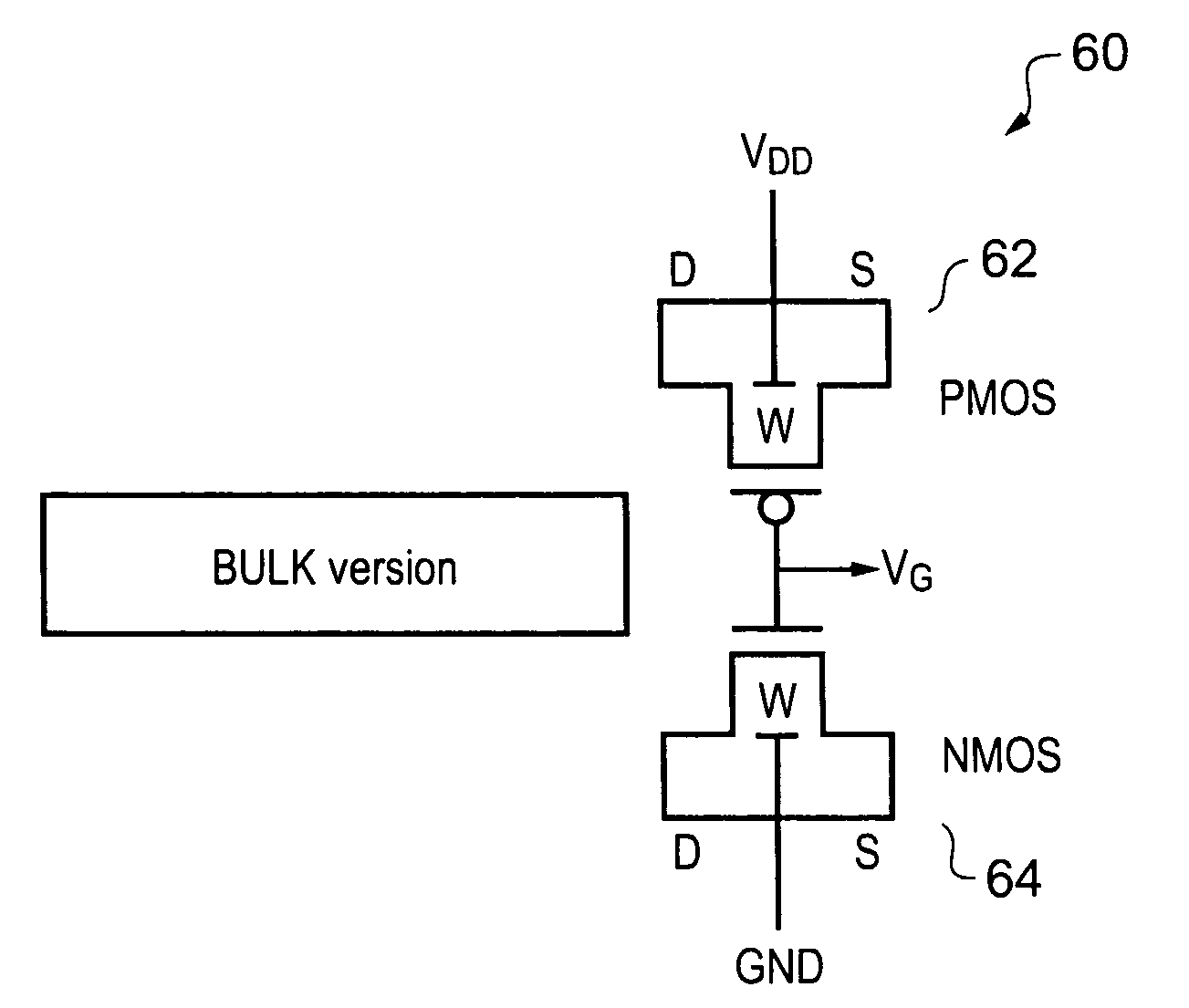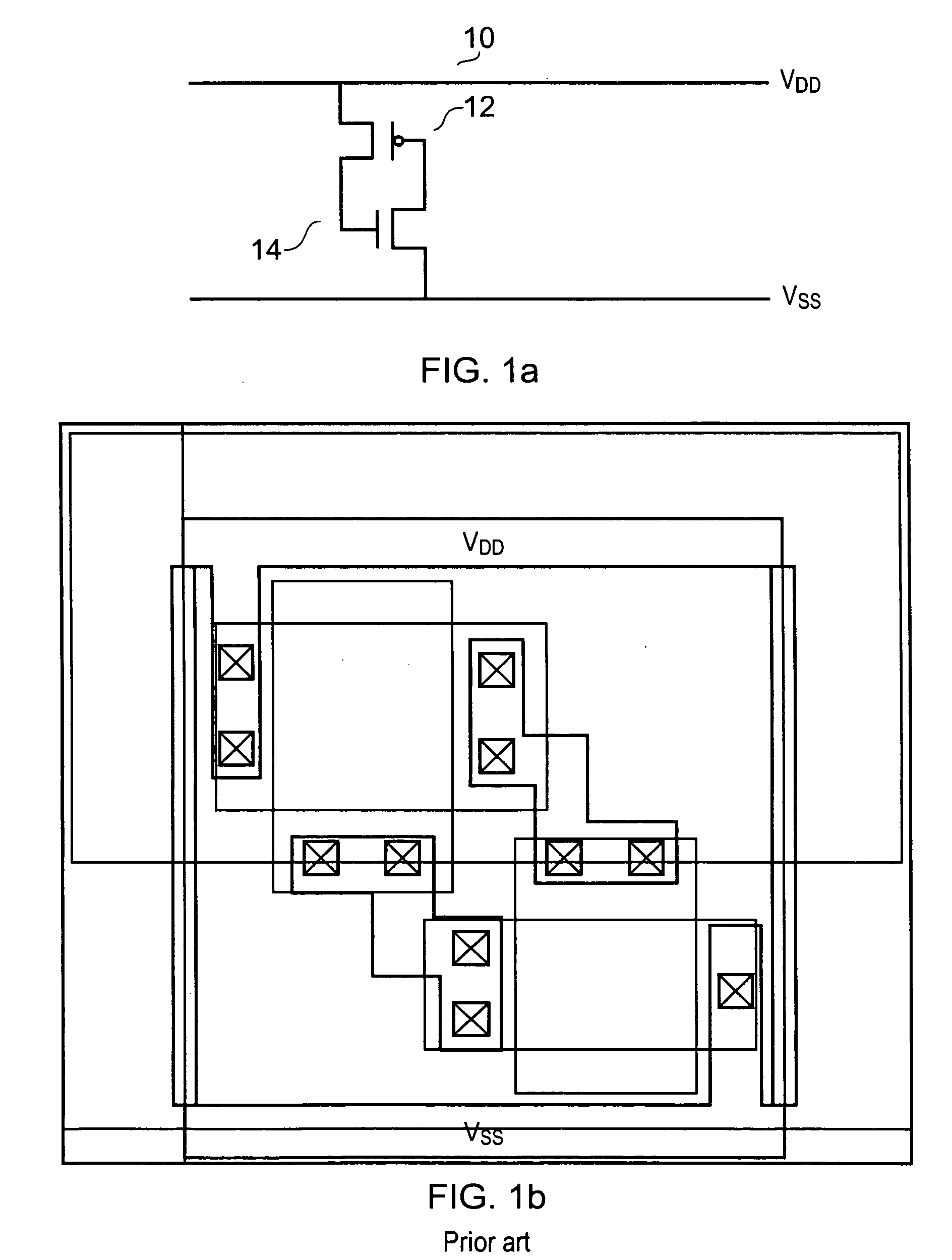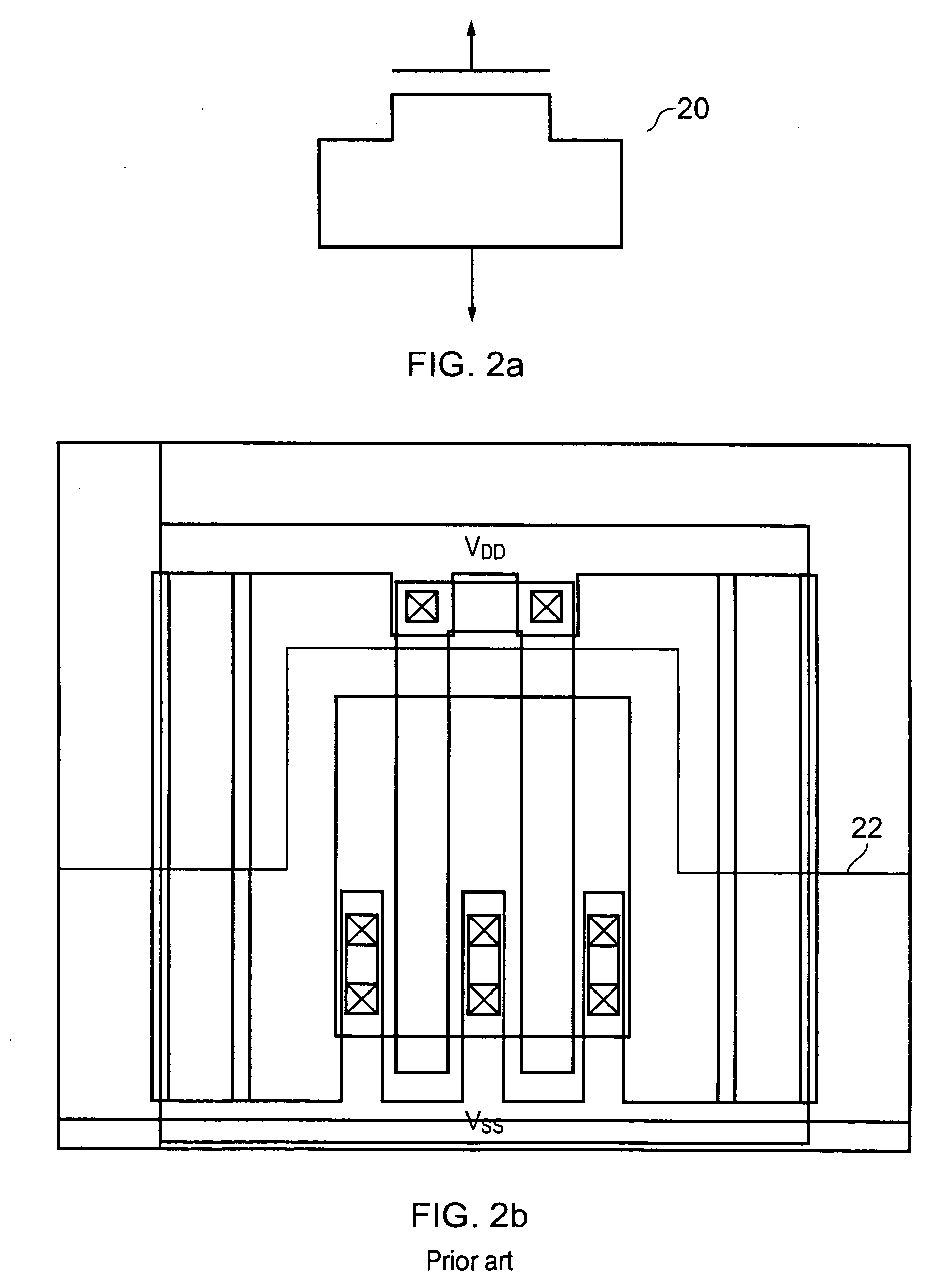Decoupling capacitors
a capacitor and capacitor electrode technology, applied in the direction of fixed capacitor electrodes, basic electric elements, electric devices, etc., to achieve the effect of low leakage, high capacitance, and small area
- Summary
- Abstract
- Description
- Claims
- Application Information
AI Technical Summary
Benefits of technology
Problems solved by technology
Method used
Image
Examples
Embodiment Construction
[0055]FIG. 3a shows a decoupling capacitance according to an embodiment of the present invention. It comprises an NFET transistor 30 arranged in parallel with a PFET transistor 40. As can be seen by the layout diagram FIG. 3b, which shows two of the structures adjacent to each other this is a symmetrical structure which therefore enables the boundary between the nwell and the p type substrate to be straight and also results in there being very little unused space on the silicon. Thus, the capacitance density of this structure is high.
[0056]In this embodiment, the gates of the FET's are attached to the supply nodes through a diffusion layer 50. This is referred to as a diffusion jumper and is used to increase the amount of series resistance. In some embodiments, where series resistance is not required then these gates can be connected to the supply nodes using a metallisation layer.
[0057]As can be seen with this layout the decoupling capacitance density is primarily limited by the ma...
PUM
 Login to View More
Login to View More Abstract
Description
Claims
Application Information
 Login to View More
Login to View More - R&D
- Intellectual Property
- Life Sciences
- Materials
- Tech Scout
- Unparalleled Data Quality
- Higher Quality Content
- 60% Fewer Hallucinations
Browse by: Latest US Patents, China's latest patents, Technical Efficacy Thesaurus, Application Domain, Technology Topic, Popular Technical Reports.
© 2025 PatSnap. All rights reserved.Legal|Privacy policy|Modern Slavery Act Transparency Statement|Sitemap|About US| Contact US: help@patsnap.com



